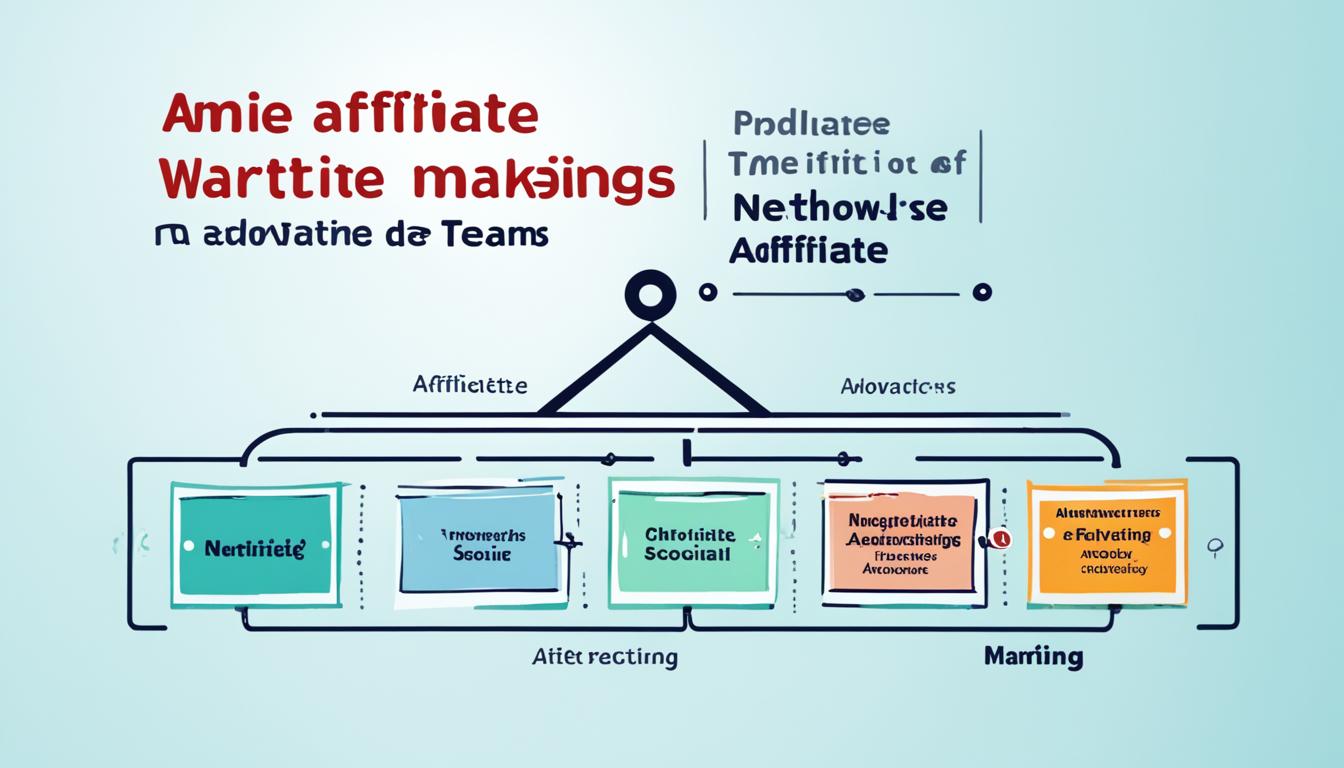Afterpay, a disruptive force in the retail and payment industries, has transformed digital marketing, revolutionized e-commerce, and redefined social media engagement. In this case study, we delve into the inception, growth, and impact of Afterpay, examining their key strategies, challenges faced, and the wider implications for the retail landscape.
Key Takeaways:
- Afterpay has revolutionized the retail and payment industries through its innovative approach and disruption of traditional models.
- They have strategically partnered with retailers, from small businesses to major brands, to integrate their service seamlessly into the checkout process.
- Afterpay’s merchant-centric approach, zero-interest payments, and user-friendly interfaces have attracted a loyal customer base and contributed to increased average transaction values for retailers.
- Regulatory scrutiny and competition have posed challenges, but Afterpay has responded by advocating for responsible practices, fostering consumer education, and continuing to innovate.
- With a mission to provide financial freedom and flexible payment options, Afterpay is poised for future growth and success in the evolving payments sector.
Inception and Growth
Afterpay was founded in 2014 by Nick Molnar and Anthony Eisen in Australia with the vision of providing a seamless and interest-free payment solution for consumers. The Afterpay founding vision revolved around empowering shoppers to make purchases without incurring interest fees, enabling them to manage their budgets more effectively.
The Afterpay business model revolutionized the retail landscape by allowing customers to pay for their purchases in four equal installments, with no interest charges if payments were made on time. This unique approach appealed to consumers who desired greater flexibility and financial control.
After experiencing rapid success and acceptance in its home country, Afterpay set its sights on global expansion. Recognizing the potential for growth in international markets, the company forged strategic partnerships with major retailers in the United States, the United Kingdom, and Canada. Their Afterpay global expansion strategy involved tailoring their marketing efforts to address the unique preferences and behaviors of consumers in each market.
By combining their consumer-centric Afterpay business model with localized marketing approaches, Afterpay successfully expanded its presence worldwide. This global expansion allowed them to tap into new customer segments, broaden their reach, and establish themselves as a dominant player in the retail and payment industries.
Localized Marketing Strategies
To ensure a successful Afterpay global expansion, the company recognized the importance of tailoring their marketing strategies to suit each market’s unique characteristics. By studying consumer behavior and preferences in different regions, Afterpay was able to create targeted campaigns that resonated with local audiences.
For example, in the United States, Afterpay collaborated with popular retailers to offer exclusive discounts and promotions to American shoppers. By partnering with well-known brands and leveraging influencer marketing, Afterpay gained visibility and credibility among American consumers.
In the United Kingdom, Afterpay focused on the booming online fashion market. They formed strategic partnerships with fashion retailers, offering shoppers a convenient and interest-free payment option. This approach resonated with UK consumers who prioritize affordability and ease of use when making online purchases.
Similarly, in Canada, Afterpay strategically aligned itself with established retailers, tapping into the country’s growing e-commerce sector. By highlighting the benefits of their interest-free installment payments, Afterpay successfully attracted Canadian consumers who sought budget-friendly shopping options.
Throughout their international expansion journey, Afterpay remained true to their founding vision and business model, which proved to be instrumental in their growth and success. Their ability to adapt to local markets and provide tailored solutions to consumers solidified their position as a leader in the buy now, pay later industry.
Key Strategies
Afterpay has implemented several key strategies to establish itself as a leading player in the retail and payment industries. These strategies revolve around merchant partnerships, a consumer-centric approach, and technological innovation.
Merchant Partnerships
One of Afterpay’s core strengths lies in its strategic collaborations with a diverse range of retailers. From small businesses to major brands, Afterpay has formed partnerships to integrate its service seamlessly into the checkout process of numerous online and offline stores. This strategic approach has enabled Afterpay to expand its customer base and gain widespread acceptance among merchants.
Consumer-Centric Approach
Afterpay’s success can be attributed in part to its consumer-centric approach. By offering zero-interest payments and user-friendly interfaces, Afterpay has created a payment solution that caters to the needs and preferences of its target demographic. This consumer-friendly model has resonated with shoppers, driving higher engagement and adoption rates.
Furthermore, Afterpay has leveraged social media and influencer marketing to build brand awareness and establish an emotional connection with its customers. This approach has allowed Afterpay to create a community of loyal users who promote and advocate for the brand.
Technological Innovation
Recognizing the importance of technology in the digital payment landscape, Afterpay has invested heavily in technological innovation. The company has developed a robust and easily integrable platform for merchants, streamlining the payment process and providing a seamless experience for both merchants and consumers.
Moreover, Afterpay has prioritized optimizing its services for mobile users, recognizing the significant shift towards mobile shopping and payment transactions. By offering a frictionless and secure mobile experience, Afterpay has positioned itself as a leader in the mobile payment space.
These key strategies, including merchant partnerships, a consumer-centric approach, and technological innovation, have positioned Afterpay as a disruptive force in the retail and payment industries. Through these strategic measures, Afterpay continues to redefine the way consumers shop and pay, while also driving growth for its merchant partners.
| Benefits of Afterpay’s Key Strategies: |
|---|
| Enhanced customer acquisition through merchant partnerships |
| Increased customer engagement and adoption with a consumer-centric approach |
| Improved payment experience for both merchants and consumers through technological innovation |
| Expanded reach and acceptance in the mobile payment landscape |
Challenges
The BNPL sector, including Afterpay, has not been immune to regulatory scrutiny. Regulators worldwide have expressed concerns about its potential impact on vulnerable consumers. To address this, Afterpay has actively engaged with regulators, advocating for responsible practices and consumer education. By collaborating with regulatory authorities, Afterpay aims to ensure that its services align with industry standards of consumer protection and financial responsibility.
The success of Afterpay has attracted a multitude of competitors, intensifying the competition within the BNPL space. Recognizing the need to stay ahead, Afterpay has continued to innovate, expand globally, and form strategic partnerships. These initiatives allow Afterpay to enhance its offerings, penetrate new markets, and maintain a competitive edge in an ever-evolving landscape.
Impact on Retail
Afterpay has had a significant impact on consumer behavior, particularly among younger demographics. The introduction of Afterpay as a convenient and flexible payment option has led to a shift in how consumers approach their purchases. Instead of making full payments upfront, they can now split their payments into four interest-free installments through Afterpay, making it easier for them to manage their finances and budget effectively. This change in consumer behavior has resulted in increased average transaction values for retailers, as customers feel more comfortable making larger purchases knowing that they can spread out the payments.
Furthermore, Afterpay has proven to be beneficial for merchants. By offering Afterpay as a payment option, merchants can attract new customers who are specifically looking for a flexible payment solution. This not only boosts customer acquisition but also increases conversion rates, as shoppers are more likely to complete their purchases when they have the option to pay later in installments. Additionally, Afterpay provides an added benefit to merchants by guaranteeing payment, even if customers default on later installments. This reduces the risk for merchants and helps them mitigate potential losses.
Benefits of Afterpay for Retailers
- Increased average transaction values
- Higher conversion rates
- Attracting new customers
- Risk mitigation and guaranteed payment
Birth of a Mission
Afterpay is driven by a clear and ambitious vision to reshape the payment landscape and empower consumers with financial freedom. Their mission is to provide an interest-free payment solution that caters to the changing needs and preferences of customers, especially those who may not have access to traditional credit models.
By offering a flexible and user-friendly payment option, Afterpay aims to break down barriers and provide equal opportunities for all individuals to make purchases without the burden of interest fees. This aligns with their vision of creating a more inclusive and accessible financial ecosystem.
Afterpay’s mission goes beyond just facilitating seamless payments. They strive to revolutionize the way people approach their finances, encouraging responsible spending habits and empowering consumers to make informed purchasing decisions.
With this mission at the core of their operations, Afterpay is not only making a significant impact on the retail industry but also driving positive change in the lives of millions of consumers worldwide.
| Afterpay Vision | Afterpay Mission |
|---|---|
| To reshape the payment landscape and provide financial freedom | To offer an interest-free payment solution and empower consumers |
Partnerships and Setbacks
Throughout its journey, Afterpay has formed several significant partnerships that have contributed to its growth and success. One notable collaboration was with Touchcorp, a payments firm. Initially, Afterpay partnered with Touchcorp to leverage their expertise and back-end payment system support, enabling seamless and efficient transactions for their customers.
However, the collaboration proved to be so successful that Afterpay eventually merged with Touchcorp, forming the entity known as Afterpay Touch. This merger enhanced Afterpay’s capabilities and expanded its reach, solidifying its position as a leading player in the Buy Now Pay Later (BNPL) industry.
Another crucial partnership for Afterpay was with Dovetail, a digital agency. Recognizing the need to enhance its web platform and develop a robust mobile app, Afterpay joined forces with Dovetail to revamp its digital presence and optimize the user experience.
This partnership allowed Afterpay to leverage Dovetail’s expertise in design, development, and user interface, resulting in a more streamlined and user-friendly platform for customers. By providing an intuitive interface and seamless functionality, Afterpay enhanced its customer experience and attracted a wider user base.
Marketing Methods
Afterpay employs a range of innovative marketing techniques to effectively reach and engage their target audience. Through a combination of unconventional advertisements, engaging social media posts, and user-friendly app design, Afterpay has mastered the art of customer engagement.
Unconventional Advertisements
Afterpay breaks away from traditional advertising methods by creating unique and attention-grabbing campaigns. They understand the importance of standing out in a crowded market and use bold visuals, witty slogans, and memorable taglines to capture the interest of their target audience.
One such example is Afterpay’s campaign titled “Shop Now. Take Now. Pay Later.” This straightforward yet enticing message encapsulates the core value proposition of Afterpay, engaging consumers with the promise of convenient and interest-free shopping.
Social Media Engagement
Afterpay leverages the power of social media platforms to connect with their target audience on a personal level. By creating engaging and interactive content, Afterpay fosters a sense of community and cultivates brand loyalty.
They collaborate with popular influencers and celebrities to showcase the benefits of using Afterpay. These collaborations not only raise brand awareness but also reinforce Afterpay’s credibility and appeal among younger demographics.
Afterpay also encourages user-generated content by running social media campaigns that prompt customers to share their Afterpay experiences or show off their latest purchases. This approach not only keeps the brand top-of-mind but also creates a sense of authenticity and trust.
User-Friendly App Design
Recognizing the importance of providing a seamless user experience, Afterpay places great emphasis on designing their app and interfaces to be intuitive and user-friendly.
The app’s layout and navigation are designed to be straightforward, making it easy for users to browse products, add them to their cart, and complete their purchases using Afterpay. Clear instructions and visual cues guide users through the payment process, ensuring a smooth and hassle-free experience.
Furthermore, Afterpay incorporates features that enhance customer satisfaction and convenience. For example, users can set up payment reminders, view their transaction history, and manage their account settings within the app. These added features further improve customer engagement and loyalty.
Afterpay’s commitment to delivering a seamless user experience extends beyond the app itself. They continuously gather customer feedback and make iterative improvements to their platform, ensuring that their marketing efforts align with their customers’ needs and preferences.
Conclusion
Afterpay’s success can be attributed to its ability to identify and address a market need, establish strategic partnerships, adopt a consumer-centric approach, and prioritize technological innovation. By revolutionizing the retail and payment industries, Afterpay has reshaped the way consumers shop and pay for their purchases.
Despite facing challenges such as regulatory scrutiny and increased competition, Afterpay has continued to adapt and evolve, solidifying its position as a key player in the payments sector. Its commitment to providing financial freedom to consumers, along with its strong foundation and industry-leading solutions, sets the stage for future growth and success.
As Afterpay looks towards the future, its prospects remain bright. With a loyal customer base and a track record of innovation, Afterpay is well positioned to capitalize on the ever-changing demands of the retail and payment landscape. By staying true to its vision and mission, Afterpay will continue to shape the future of the industry and drive positive outcomes for both consumers and merchants.






